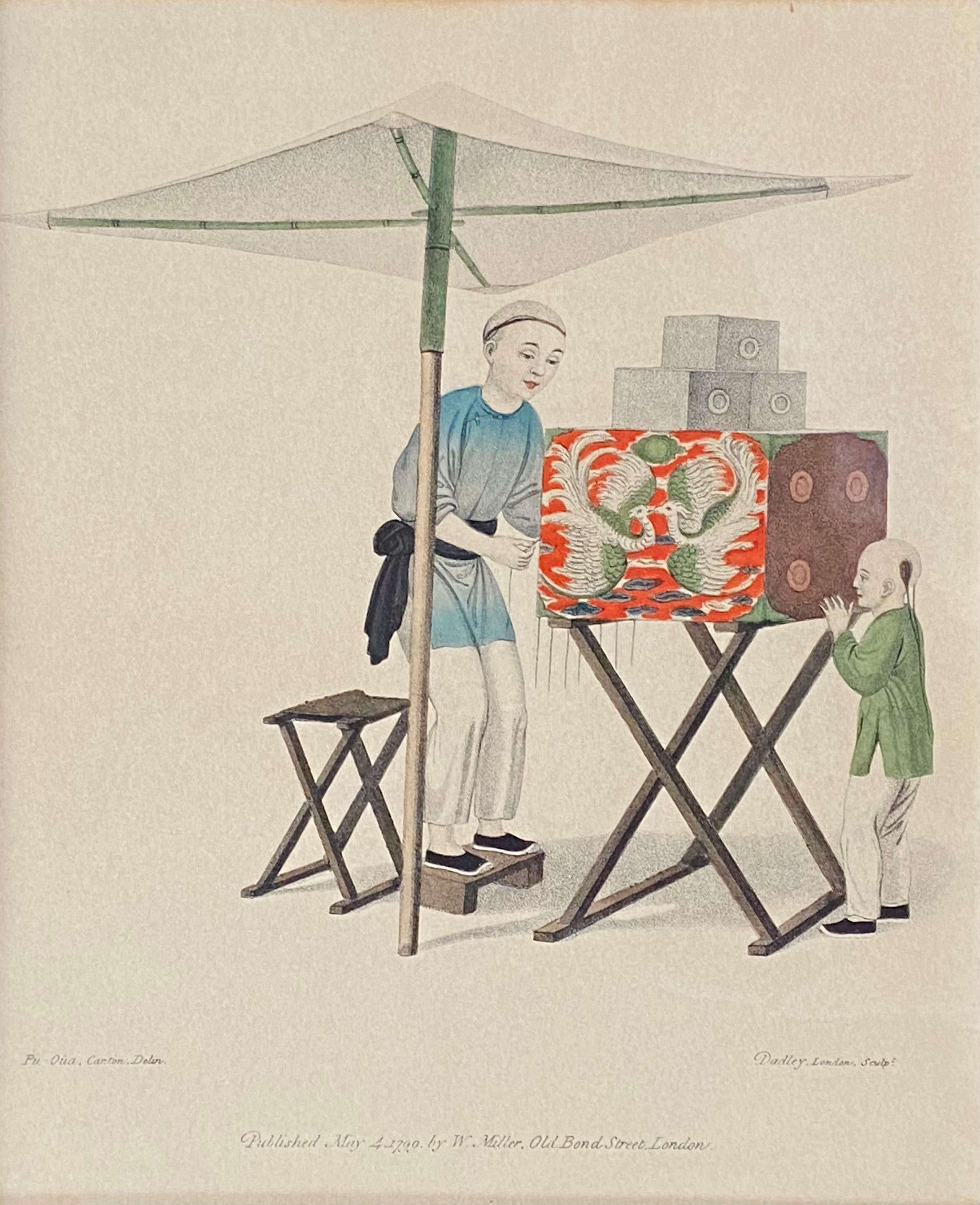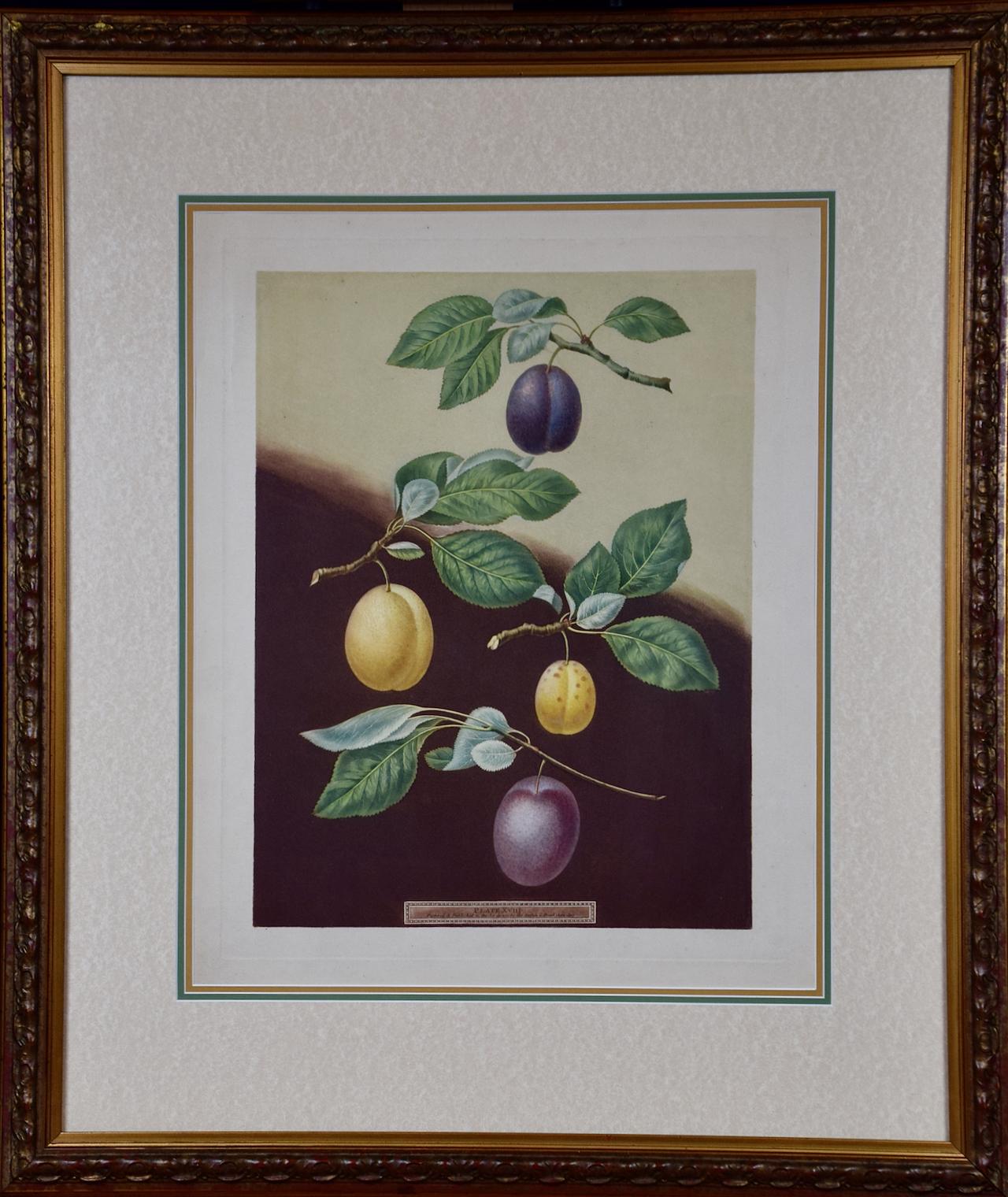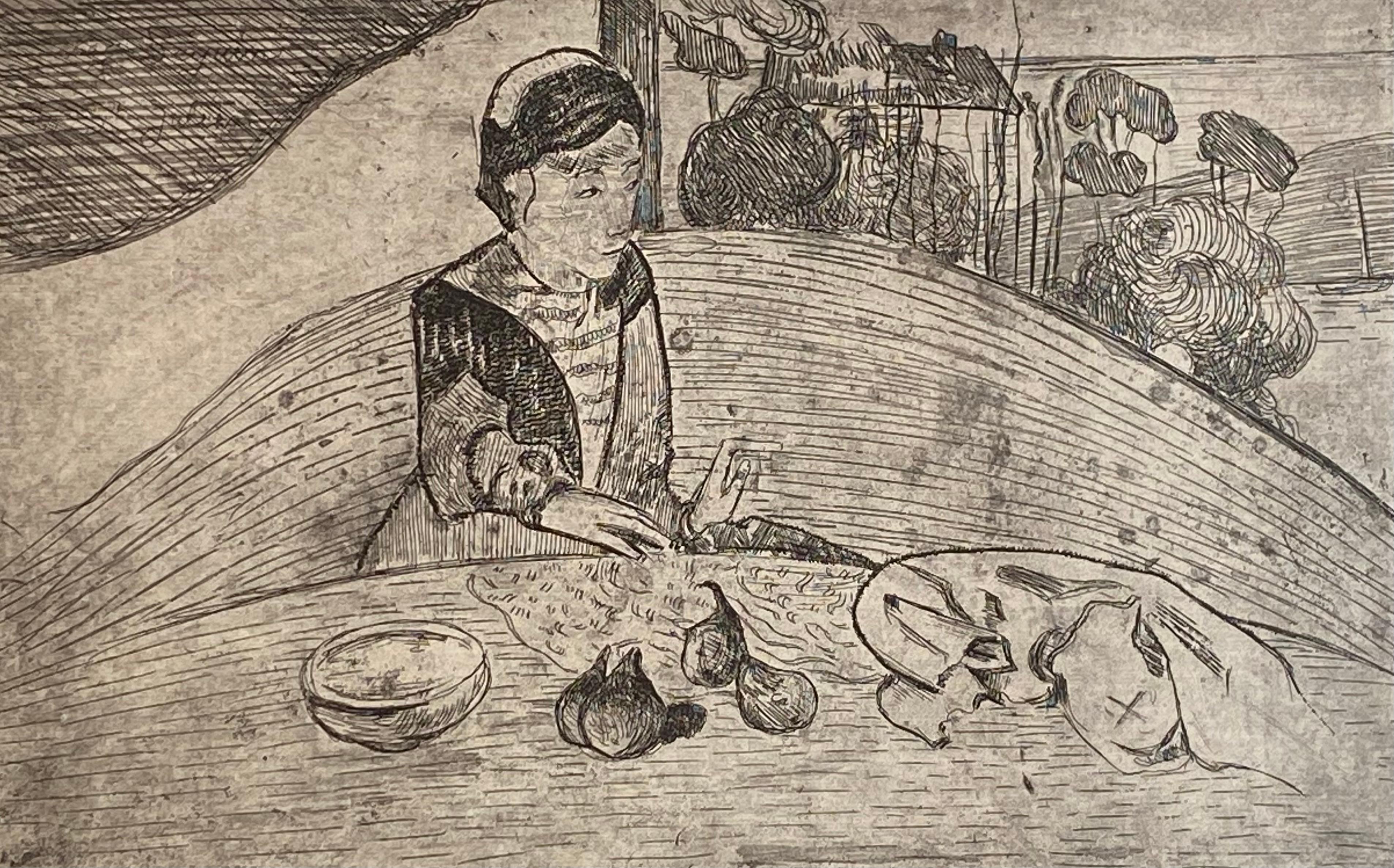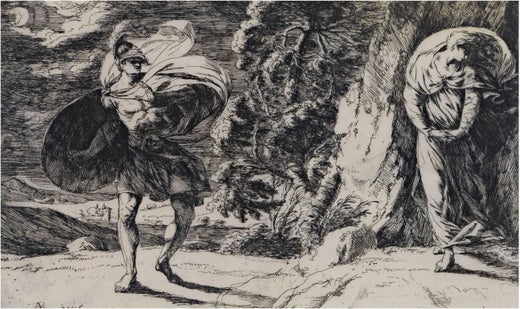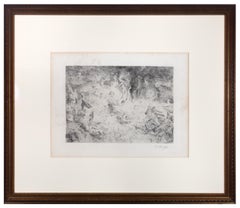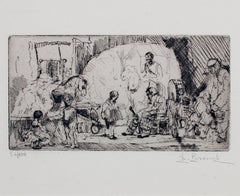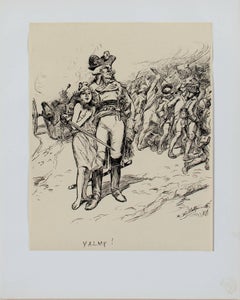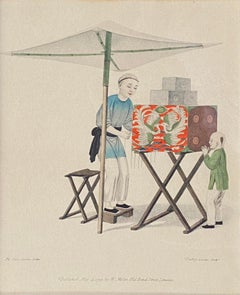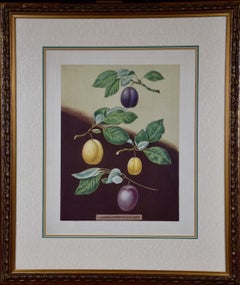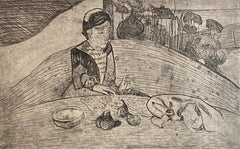Alexander Runciman18th century etching figurative royalty wedding scene print black and whitec. 1770
c. 1770
About the Item
- Creator:Alexander Runciman (1736 - 1785, British)
- Creation Year:c. 1770
- Dimensions:Height: 21.25 in (53.98 cm)Width: 25 in (63.5 cm)
- Medium:
- Movement & Style:
- Period:1770-1779
- Condition:
- Gallery Location:Milwaukee, WI
- Reference Number:Seller: 9798g1stDibs: LU60534092052
Alexander Runciman
Alexander Runciman, born on August 15, 1736, in Edinburgh, was a Scottish painter of historical and mythological subjects. He was the elder brother of John Runciman, also a painter. He studied at the Foulis Academy, Glasgow and from 1750–62, he was apprenticed to the landscape painter Robert Norie, later becoming a partner in the Norie family firm. He also worked as a stage painter for the Theatre Royal, Edinburgh. In 1767, he went to Rome, where he spent five years. His brother John accompanied him but died in Naples in the winter of 1768–69. During Runciman's stay in Italy, he became acquainted with other artists such as Henry Fuseli and the sculptor Johan Tobias Sergel. Runciman's earliest efforts had been in the landscape and he turned to historical and imaginative subjects, exhibiting his Nausicaä at Play with her Maidens in 1767 at the Free Society of British Artists, Edinburgh. On his return from Italy after a brief time in London, he exhibited in the Royal Scottish Academy in 1772. He settled in Edinburgh and was appointed master of the Trustees Drawing Academy. He was patronized by Sir James Clerk, whose hall at Penicuik House he decorated with a series of subjects from Ossian. He also created various religious paintings and an altar-piece in the Scottish Episcopal Church, Edinburgh and easel pictures of Cymon and Iphigenia, Sigismunda Weeping over the Heart of Tancred and Agrippina with the Ashes of Germanicus. In 1773, he was listed as sharing a studio with Mr. McLarin at the foot of Old Assembly Close, Royal Mile. He enjoyed a strong reputation as a landscape painter in his lifetime. Some of his works, due to their spontaneity, the vigor of style, color and unorthodox composition, place him as an early exponent of modern art. Keith Ralph studied under Alexander Runciman. Runciman died on October 4, 1785, in Edinburgh and is buried in Canongate Churchyard. The grave is unmarked but a stone plaque was erected by the RSA in 1866 on the west-facing wall of the church to honor his memory and also commemorating his brother John who died in Naples.
- ShippingRetrieving quote...Shipping from: Milwaukee, WI
- Return Policy
More From This Seller
View All1890s Academic Figurative Prints
Etching, Paper, Ink, Laid Paper
1910s Academic Figurative Prints
Pencil, Etching
1770s Academic Figurative Prints
Etching, Paper, Ink
1890s Academic Figurative Prints
Black and White
1870s Academic Figurative Prints
Engraving
Late 20th Century Figurative Prints
Drypoint, Etching
You May Also Like
1790s Academic Figurative Prints
Aquatint
Early 19th Century Academic Figurative Prints
Aquatint
1970s Academic Figurative Prints
Archival Paper, Etching
1890s Academic Figurative Prints
Etching
Late 17th Century Academic Figurative Prints
Etching
Late 17th Century Academic Figurative Prints
Etching
